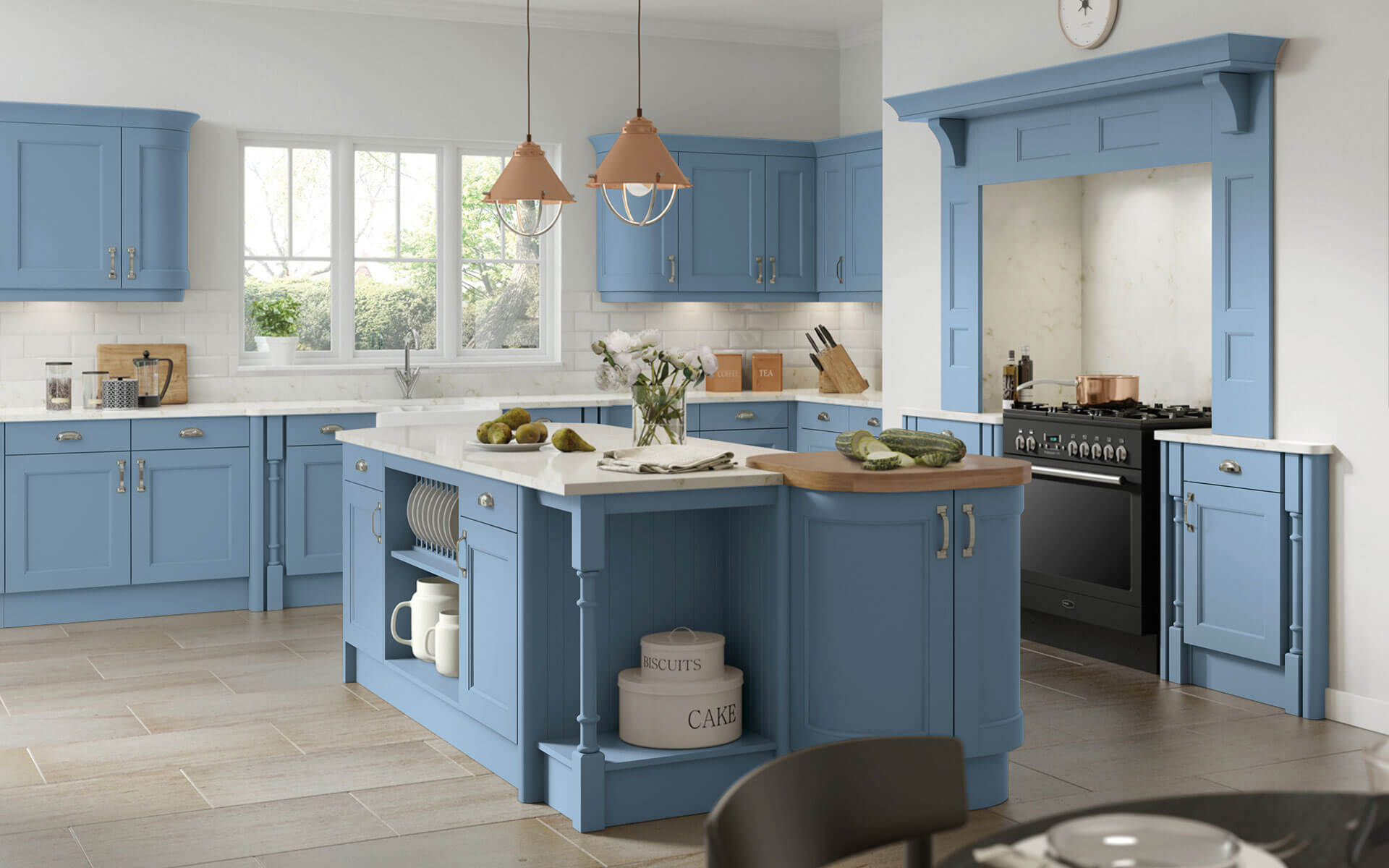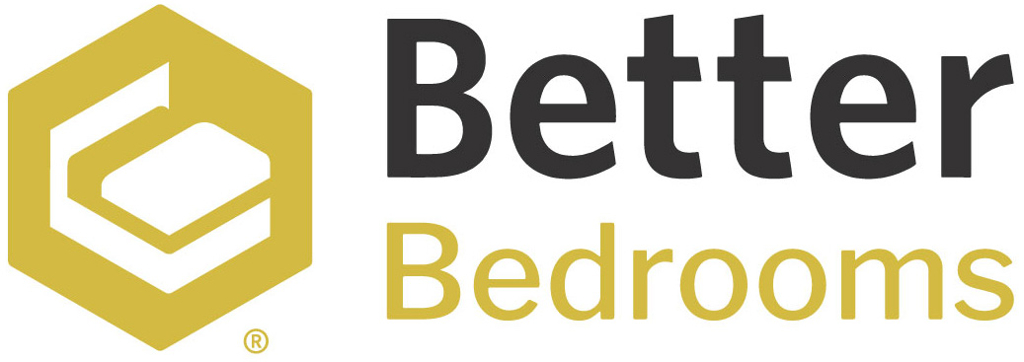
Traditional Kitchens To Suit All Budgets
The detailing to the frame or centre panel make traditional kitchens a popular choice for country-style kitchens. Finishing options range from hard-wearing vinyl to hand painted timbers. Traditional kitchens generally have a large choice of matching accessories, such as Overmantles, Pilasters and Plate Racks. Learn more about Traditional Kitchens.
Order Now, Deliver Later!
Secure today’s price and pick a
delivery date that suits you at checkout.
Traditional Kitchen Ideas That Still Work
Traditional kitchens are still one of the most reliable and well-used kitchen styles. They're designed around practicality, natural materials, and framed cabinets that hold up to everyday use. Unlike trend-led designs, they don’t rely on new finishes or bold features to stay relevant. They just work.
This guide covers everything you need to think about when planning a traditional kitchen - from materials and colours to cabinet styles and layout tips. It’s written for homeowners, fitters, and anyone looking for a classic kitchen that’s built to last.
Outline
-
What is a traditional kitchen?
-
Popular colours for traditional kitchens
-
Timber and solid wood choices
-
Kitchen units and cabinet styles
-
Choosing cupboard doors and drawer fronts
-
Classic kitchen design with storage in mind
-
Using open shelving in a traditional style
-
Worktops that suit a traditional kitchen
-
Planning a small traditional kitchen
-
Fitted kitchens at trade prices
1. What is a traditional kitchen?
A traditional kitchen uses framed cabinetry, soft colours, and practical materials. You won’t find gloss finishes or handleless units here. This is a style built on detail and balance.
Look for:
-
Doors with centre panels and moulded profiles
-
Timber construction or timber-effect finishes
-
Painted cabinets in calming shades
-
Stone or wooden worktops
-
Classic features like cornices, end panels, and visible hinges
Traditional kitchens are designed to feel comfortable and useful, with plenty of surface area and storage where it’s needed.
2. Popular colours for traditional kitchens
Traditional kitchens tend to use muted and natural tones. These colours create calm and allow the cabinet shapes and materials to do the work.
Examples:
-
Sage green for a subtle, natural effect
-
Shades of cream to reflect light and keep things clean
-
Soft greys or stone tones for depth
-
Natural wood grain to add warmth
Painted cabinets work well in this style. You can also mix colours - for example, a timber island and painted base cupboards - to add variation without losing the traditional look.
3. Timber and solid wood choices
Wood is at the centre of a traditional kitchen. Whether painted or natural, timber adds texture and a sense of quality. You’ll see it in cupboard doors, drawer fronts, panels, and sometimes worktops.
Options include:
-
Solid oak for full kitchens or feature areas like dressers
-
Solid timber for internal frames, doors, and supports
-
Timber veneer for doors with a natural grain at a lower price
Solid wood kitchens feel heavier and more premium. Veneer options are great for keeping budgets on track while still getting the traditional appearance.
4. Kitchen units and cabinet styles
Traditional kitchen units are usually framed and use moulded door profiles. There’s a visible structure to them - no hidden handles or slab doors. It’s all about strong construction and clear definition.
Look out for:
-
Cabinets with 5 piece door fronts and bevelled edges
-
Internal carcasses in matching tones
-
Cupboards that go to the ceiling to maximise space
-
End panels and cornices that frame the units properly
This type of cabinet design creates a classic kitchen look. Units tend to be symmetrical and spaced with intention.
5. Choosing cupboard doors and drawer fronts
Doors and drawer fronts are what you see most, so they define the look. For a traditional style kitchen, it’s best to stick with profiles that include edge detail, centre panels, and painted or timber finishes.
Suggestions:
-
Raised centre panels
-
Framed timber fronts with visible grain
-
Painted cabinets in neutral tones
-
Strong hardware - antique handles, cup pulls, or knobs
Cupboard doors should match or complement drawers. The two should feel part of the same family, whether you're using solid wood or wrapped MDF with a veneered finish.
6. Classic kitchen design with storage in mind
Storage in traditional kitchens is usually a mix of full-height cupboards and deeper base units. These can include baskets, trays, pull-outs, and internal drawers.
Smart options include:
-
Cupboards with adjustable shelving
-
Pull-out drawer units to store pans and utensils
-
Built-in spice racks and corner units
-
Larder cabinets with internal drawers
Plan for how you use the space. Fitted kitchens allow for extras like bespeak internals without changing the external appearance of the cabinet. Traditional doesn’t mean inflexible.
7. Using open shelving in a traditional style
Open shelving can be useful in a traditional kitchen when done sparingly. It breaks up long rows of cabinets and gives you somewhere to store frequently used items or add character.
Good uses:
-
Between two tall units or wall cupboards
-
Beside a chimney breast or range cooker
-
Above base units to store crockery or glassware
Stick to solid timber or painted boards to keep the finish in line with the rest of the kitchen. Open shelves should match your work surfaces or cabinet tone.
8. Worktops that suit a traditional kitchen
Worktops are just as important as cabinets. In a traditional kitchen, they anchor the look - adding weight, contrast, or texture.
Options that work:
-
Wooden worktops like oak or walnut for warmth
-
Stone-effect laminates for an affordable alternative
-
Quartz or granite for a classic finish that lasts
Edges can be rounded or square depending on the design. Try to avoid gloss or mirrored effects - these clash with the soft, tactile feel of a traditional kitchen.
9. Planning a small traditional kitchen
Smaller kitchens still suit traditional design. The key is keeping things light, using every bit of space, and keeping the layout efficient.
Tips:
-
Use tall cupboards and make them full height
-
Mix closed storage with short runs of open shelving
-
Stick to one or two colours throughout the room
-
Use drawer units where you’d usually have shelves
A small traditional kitchen works best when it feels considered. Don’t overcrowd it. Plan for how the room will function, not just how it will look.
10. Fitted kitchens at trade prices
You don’t need bespoke joinery to get a traditional kitchen. Fitted kitchens at trade prices offer high-quality materials and cabinet styles that suit traditional interiors.
Why fitted kitchens work:
-
Designed to your layout with minimal waste
-
Built from strong components - solid timber, MDF, or veneer
-
Easy to install and plan for
-
Available in a wide range of colours and finishes
If you’re buying a new kitchen, this is often the most affordable way to get a traditional look and feel without compromising quality.
Summary: What to remember about traditional kitchens
-
Traditional kitchens use natural materials, framed cabinets, and calm colours
-
Neutral hues like cream, sage green, and light grey work best
-
Cabinet doors often include raised centre panels or bevelled edges
-
Solid wood and solid oak offer strength and warmth
-
Veneer and wrapped MDF are good cost-saving options
-
Storage should be planned, with a mix of cupboard and drawer units
-
Use open shelving in moderation to break up long cabinet runs
-
Choose worktops that match the tone of the kitchen - wood or stone works best
-
Small kitchens benefit from tall units, soft colours, and simple layouts
-
Trade-priced fitted kitchens are a practical way to achieve a classic kitchen design
If you're planning a new kitchen and want something that’s built to last, traditional kitchens are still one of the best ways to make your kitchen space feel considered and complete.
Frequently Asked Questions About Traditional Kitchens
You've been exploring the world of traditional kitchens, and we're sure you have a few questions. Here, we've compiled some of the most common queries we receive about traditional kitchens. From materials and colours to functionality and lighting, we've got you covered.
What is a traditional style kitchen?
A traditional style kitchen is characterised by its use of classic design elements such as painted cabinets, simple countertops, and hardwood floors. It takes cues from the kitchens of the past and is known for its timeless appeal.
What is the difference between traditional and modern kitchens?
Traditional kitchens tend to use more natural materials and have a warmer, more homely feel. Modern kitchens, on the other hand, often feature sleek lines, minimalist design, and the use of synthetic materials.
What are some common features of traditional kitchens?
Common features of traditional kitchens include painted cabinets with or without glass front doors, simple granite or laminate countertops, hardwood floors, and the use of natural materials like wood and stone.
How can I create a traditional kitchen in my home?
Creating a traditional kitchen in your home can be achieved by incorporating classic design elements such as painted cabinets, simple countertops, and hardwood floors. You can also add personal touches through unique details and embellishments.
Are traditional kitchens expensive?
The cost of a traditional kitchen can vary depending on the materials used and the complexity of the design. However, at Better Kitchens, we are committed to providing quality, affordable kitchens that don't compromise on style or functionality.
What materials are typically used in traditional kitchens?
Traditional kitchens often use natural materials such as wood and stone. Cabinets are typically made of solid wood, and countertops can be made from granite, marble, or butcher block.
What colours are commonly used in traditional kitchens?
Traditional kitchens often feature warm, neutral colours. Whites, creams, and light browns are popular choices for cabinets and walls. Accents of blues, greens, or reds can also be used to add a touch of colour.
How can I make my traditional kitchen more functional?
To increase functionality in a traditional kitchen, consider incorporating modern appliances and storage solutions. This could include a range cooker, an integrated dishwasher, or clever storage units from Better Kitchens.
Can a traditional kitchen have a modern twist?
Absolutely! Mixing traditional and modern elements can create a unique and personalised kitchen. For example, you could have traditional wooden cabinets with modern handles, or a classic shaker kitchen with contemporary lighting.
What types of lighting work well in a traditional kitchen?
Traditional kitchens often feature warm, ambient lighting. This can be achieved with pendant lights over the kitchen island or dining table, under-cabinet lighting for task areas, and wall sconces for added charm. At Better Kitchens, we offer a variety of lighting solutions to suit your needs.
In Conclusion
Traditional kitchens are a testament to the timeless appeal of classic design. They are warm, inviting spaces that are perfect for gathering with family and friends. Whether you're renovating your existing kitchen or designing a new one, a traditional kitchen is a choice that will stand the test of time.
At Better Kitchens, we are passionate about helping you create your dream kitchen. Explore our range of traditional kitchen units and accessories today and take the first step towards creating a kitchen you'll love for years to come.

